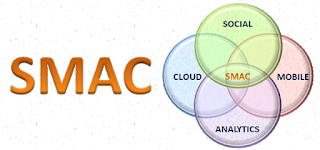At the last Super Bowl a brouhaha arose over the half-time show. It also brought some unwelcome attention to direct-to-consumer (DTC) advertising. A Comedy Central skit after the game, for instance, included blurred video of Janet Jackson’s breast, an ad featuring a flatulent horse, and the Cialis logo. Not an auspicious Super Bowl debut for DTC advertising! See the article “Super Bowl DTC: Was It Good for You?” (Pharma Marketing News, Feb. 2004).
What’s in store for this year’s Super Bowl? Will there be more DTC ads for Cialis, Levitra, and Viagra too? Will other envelopes be pushed?
Event Marketing for Rx Drugs – What If?
What If Pharma Marketers took a page out of the Packaged Goods Marketers’ handbook? Here’s a possible scenario: Event Marketing.
A story in Today’s WSJ (“Super Bowl XXXIX: Obstacle Course vs. ‘Potty Palooza’ “) gives us a glimpse into event marketing a la packaged goods like toilet tissue and beer. The idea is to give away samples on site and organize attention-grabbing shows to attract people to a booth or other location where the product is featured and given away.
According to the WSJ article, event marketing is one of the fastest growing tactics in marketers’ repertoires. As a Cadillac marketer stated, “There is less and less [TV] network viewing by our target, and event marketing is one way to give customers first-hand experience with our products.” ED drugs are targeted to exactly the same market as Cadillacs — slightly older males. Well, older than the prime 18-35 year-old viewing public anyway. It would seem, therefore, that event marketing would also be of interest to ED marketers.
What if Viagra marketers decided to follow this advice and go one up on Cialis and Levitra marketers — who broke ground by airing DTC ads at last year’s Super Bowl — by hosting an event at the Super Bowl? Could they give away free samples of Viagra? How would that work? Could it work?
The Viagra “Get It Up” Pavilion – Get It While You’re Hot!
Not far from the Budweiser booth, which is giving away those crazy, Eagles’ and Patriots’ logoed helmets with two beer cans that feed you through tubes, is Viagra’s “Get It Up” Pavilion. It is situated, as a matter of fact, between the Bud booth and the huge 56,000 square-foot Daimler-Chrysler exhibit that includes a simulated off-road racetrack. Talk about location, location, location.
In the (fictional) Viagra Pavilion, visitors can walk through a simulated penile environment aglow with pulsating blood vessels while sipping their Buds through tubes. (Not that it looks anything like a penis – no red-blooded American male would ever knowingly enter such a thing. It’s just a walkway in a tube festooned with pulsating red racing lights).
At the end, the visitors are ejaculated as it were — there’s steep ramp at the end, which causes the visitors to speed up as they egress — into an area populated with beautiful female models in cheerleader costumes. The “cheerleaders” escort them to physicians who, after a brief “examination” (just a few questions really – why should they do more? They get free Super Bowl tickets for their service!), hand them free trial packets of Viagra. (Perhaps this is a bit far fetched. It could be that the girls or fake doctors just give them coupons for free trails after they get a prescription from a real doctor somewhere else.)
Blue bus tours of Jacksonville’s “red light” district are also offered.
Could This Happen?
I hope not! I’ve heard of blue pills being offered at events like concerts and at night clubs. Perhaps these are Viagra or merely sugar pills. As a result, there has been a lot of buzz about Viagra and urban legends generated. Can anyone say if this is the result of “event marketing?”
Pharma marketers are often advised to take a lesson from packaged goods marketers — most often by packaged goods marketers recently transplanted to the pharma industry. Pharma marketers are new to dealing directly with consumers. This is why many packaged goods marketers have been recruited by pharma companies – – to give pharma more experience with consumer marketing techniques.
These PG transplants will drive DTC to new lows, which can be seen in recent erectile dysfunction (ED) drug ads — Levitra is a good example — that appeal to the emotions rather than to the intellect. That is, they make you WANT the product because it promises to make you FEEL GOOD! Hey, every guy wants a better sexual “experience!”
What’s Good for the Gander Is Not Good for the Goose!
It’s funny that the product that has brought the most attention to the problem with DTC ads is not in the ED category, but in the pain category – Vioxx. I venture to suppose that the vast majority of Vioxx users were women – I bet about 70%. Anyway, pain is not a male emotion that consumer ads can play off of and most pain remedy ads I have seen feature women sufferers. Not coincidentally, most Senators who criticize DTC, being men, have found Vioxx rather than Levitra to be a convenient target. Wink, wink, nod, nod, ‘nuf said, eh what?
Anyway, now that DTC advertising is coming under increasing attack (see, for example, “How the FDA Can Fix DTC“), it is time for the pharma industry to reject the packaged goods marketer’s repertoire. While I don’t really believe that Pfizer would ever host anything like the fictional “Get It Up” pavilion mentioned here, they do give away samples of their products just like every other pharmaceutical company. This has been a staple of pharma marketing for years. Luckily, this is only done — as far as I know — within the legitimate confines of the doctor-patient relationship. I hope it stays that way.









![6 Digital Tools at the Center of Healthcare Digitalization [INFOGRAPHIC]](http://ec2-54-175-84-28.compute-1.amazonaws.com/pharma-mkting.com/wp-content/uploads/2021/04/6DigitalTools_600px-100x70.jpg)




